Internet of Nano Things Market Size
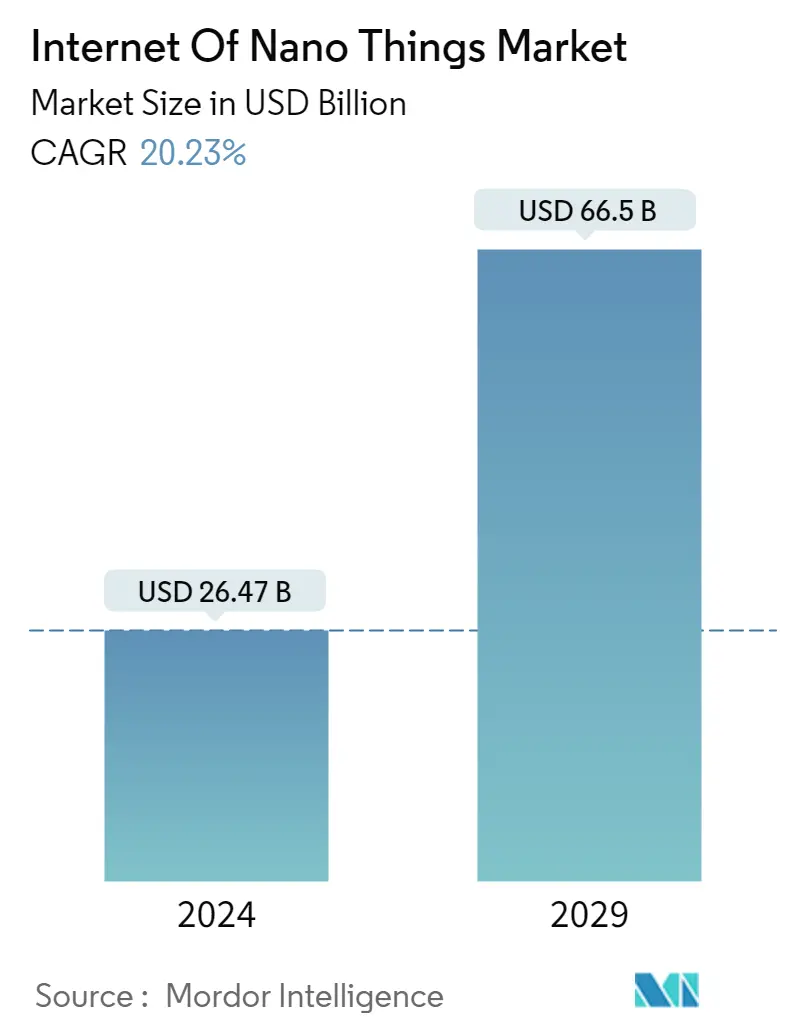
| Study Period | 2019 - 2029 |
| Market Size (2024) | USD 26.47 Billion |
| Market Size (2029) | USD 66.5 Billion |
| CAGR (2024 - 2029) | 20.23 % |
| Fastest Growing Market | Asia Pacific |
| Largest Market | North America |
Major Players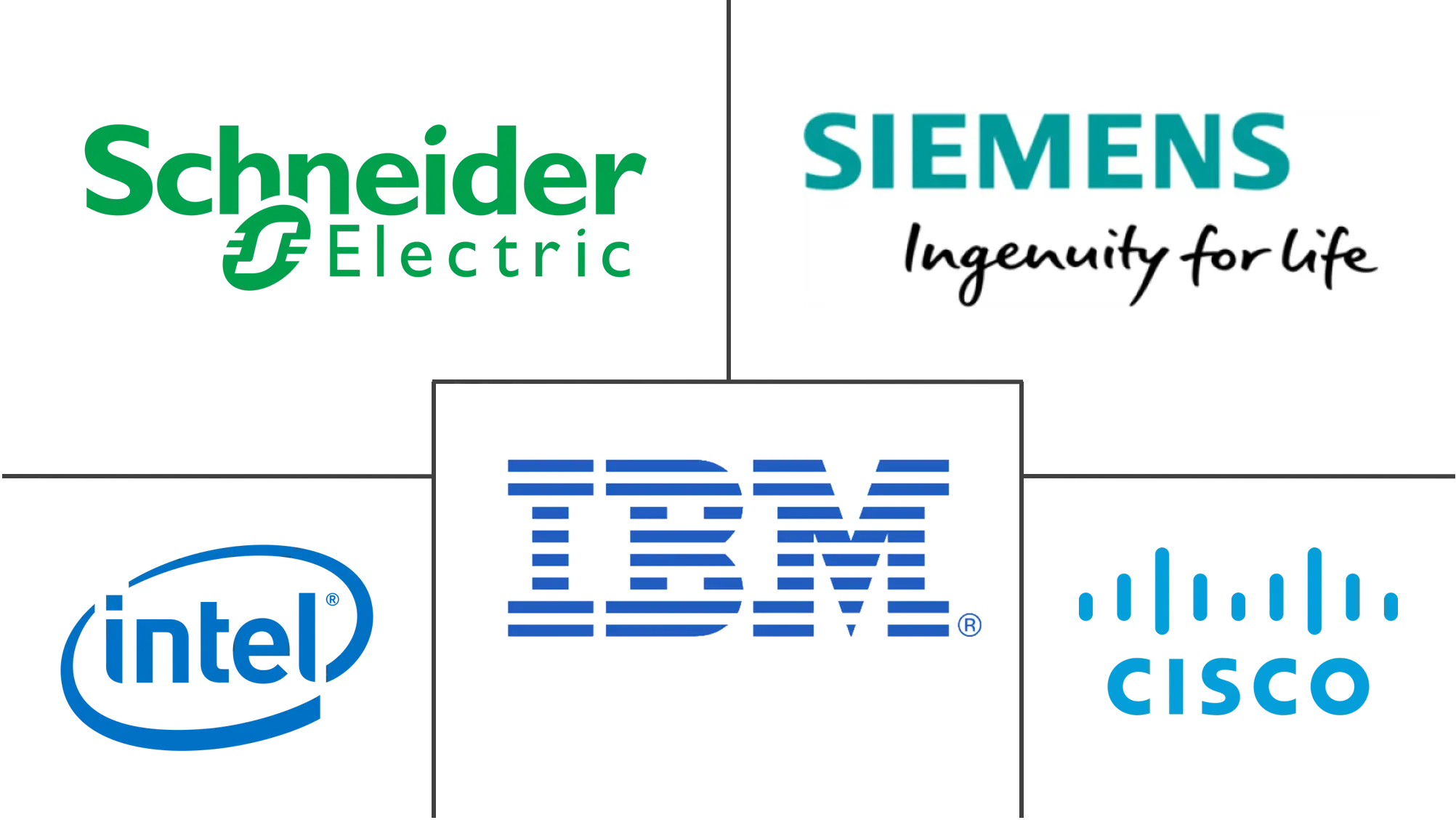
*Disclaimer: Major Players sorted in no particular order |
Internet Of Nano Things Market Analysis
The Internet Of Nano Things Market size is estimated at USD 26.47 billion in 2024, and is expected to reach USD 66.5 billion by 2029, growing at a CAGR of 20.23% during the forecast period (2024-2029).
- The internet of nano things (IoNT) facilitates the interconnection of nano-sensors and nanodevices with the existing communication technologies in the market, including the internet. Developing nano-machines with communication capabilities and interconnection with micro-and macro-devices will empower IoNT, which is increasingly seen as the next major technological innovation. These devices have dimensions ranging from 1 nm to 100 nm and are interconnected with classical networks, leading to new networking paradigms.
- IoNT is a modern technology that allows numerous nano gadgets to communicate with one another via a high-speed network. IoNT is used for data gathering, pre-processing, and sharing with end users. It also opens up many possibilities with new technologies, such as cloud computing, big data, and machine learning (ML).
- The increased government spending in the aerospace and defense segment is expected to drive the IoNT market during the forecast period, as IoNT has found significant applications in the fields of nano-drones that could be used for monitoring and carrying explosives sufficient enough to penetrate the targetted subject.
- The technological advancements over the past few years have primarily led to the rapid growth of smart environments (offices, homes, and cities, among others). This rapid increase in such environments has paved the way for the interconnectivity of applications and internet usage, prompting the emergence of IoT technology. The expansion of the IoT concept has also given access to IoNT, a new communication network paradigm primarily based on nanotechnology and IoT.
- Nano-drones, employed for monitoring and transporting military troops, are another key use of IoNT. In addition, IoNT can provide more detailed and up-to-date images of cities, houses, and factories. The use of IoNT in smart city projects may monitor various characteristics, such as air and water quality, throughout a metropolis. IoNT can capture real-time data that can be utilized to improve infrastructure, public utilities, and services. Also, rising awareness of the many benefits of IoNT and the development of nano-machines will considerably enhance market revenue growth during the forecast period.
- Nanotechnology systems are expensive and require advanced technology. The high cost is a barrier for many businesses operating on a small and medium scale to use this technology that is planning to deploy expansion strategies in the market.
- The post-COVID-19 era has changed the nature and working conditions of businesses worldwide. Companies automated their operations even more while employees continued to work remotely. IoNT developers were working on implementing IoNT techniques, which helped the IoNT business to flourish. Nano drones helped deliver medical supplies and monitor specific locations, and they were no longer regarded as merely a weapon of war and obscurity. Also, IoNT solutions in the healthcare sector offer numerous benefits, such as lowering service costs and increasing treatment outcomes, propelling the IoNT market forward.
Internet Of Nano Things Market Trends
The Healthcare Segment is Expected to Hold a Significant Share
- Nanotechnology and the internet of nano things (IoNT) have continuously impacted the healthcare segment and its transformation and contributed to better results. Including nanotechnology in medicine through nanomaterials and devices, known as nanomedicine, has brought many benefits to disease prevention, diagnosis, and treatment. The healthcare and life sciences area is predicted to grow rapidly during the forecast period. IoNT can detect life-threatening disorders early on and assists in the collecting of real-time data from patients, allowing for life-saving medical measures.
- According to the American Cancer Society, there were 1.95 million new cancer cases identified in the United States in 2023, with 609,360 cancer deaths. As a result, the rising number of cancer patients propels the healthcare nanotechnology industry forward. Nanotechnology products have been increasingly beneficial in healthcare, developing unique nanosystems for diagnosing, imaging, and treating various diseases, including cancer, cardiovascular, ophthalmic, and central nervous system ailments.
- Incorporating the concept of IoNT into healthcare has enabled more personalized, timely, and convenient health monitoring and treatment. Therefore, nanotechnology and IoNT have the potential to revolutionize healthcare in the 21st century completely, creating a system that enables early detection and diagnosis of illness, followed by accurate, on-time, and effective treatment, significantly reducing medical costs.
- The advancement of nanomedicines and nanodevices has spurred many researchers to seek alternative remedies, as current approaches are limited in earlier identification and treatment. The remarkable features and applications of diverse nanomaterials and nanosystems have made them ubiquitous in creating technologies that will be deployed shortly.
- The IoNT can also form a body sensor network (BSN) that easily applies internal nano-sensors to monitor patient health and physiological activity. The patient can view this data obtained by the nano-sensor on a wearable gadget with a doctor. As per data from the United States Patent and Trademark Office (USPTO), there are 6,926 published nanotechnology patent applications in the United States, followed by 1,715 in South Korea in 2023. These patents are testimonials of the market players investing in nanotechnology.
- Smart wearables have played a significant role in expanding the scope of IoNT in the segment. The massive adoption of fitness tracking devices and growing investments by companies like Apple, Fitbit, and Android enhance the range further by adding more healthcare features. Many startups are also bringing innovation to this segment.
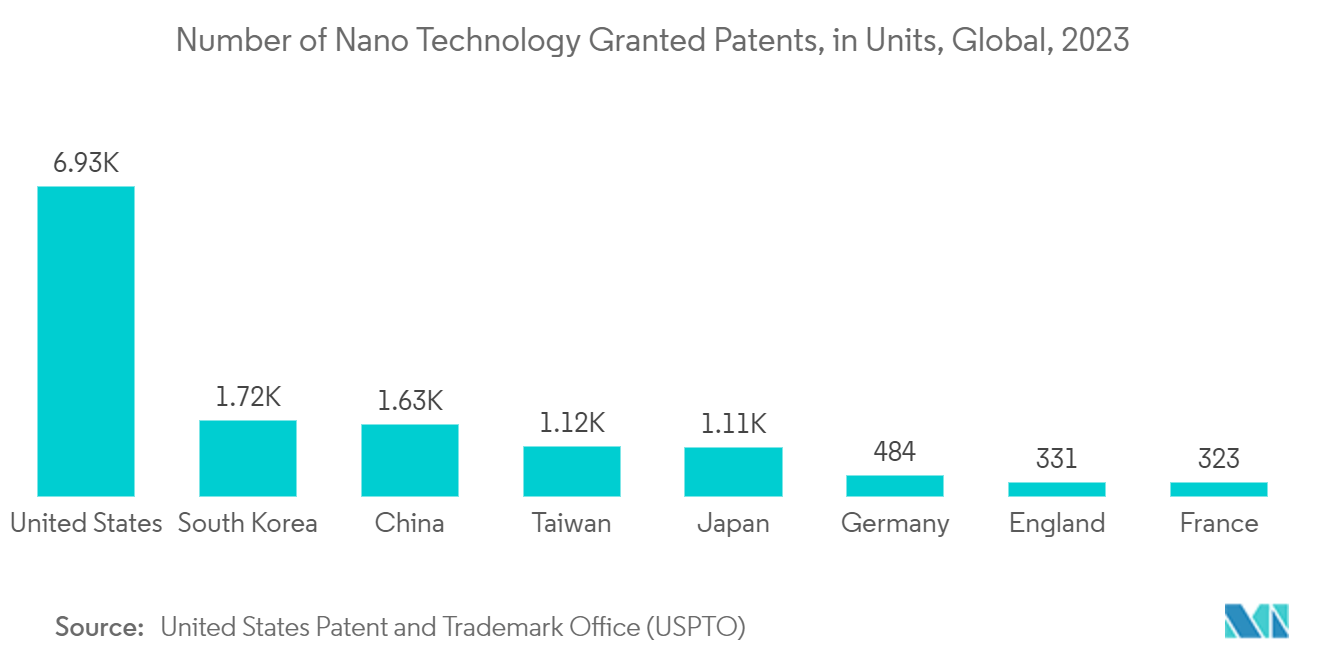
North America is Expected to Hold the Largest Share
- Modern manufacturing facilities in the United States rely on new technologies and innovations to produce higher quality products significantly with lower costs. Fast and secure 5G connectivity is expected to enable agile operations and flexible production. This technology is expected to facilitate automated warehouses, automated assembly, connected logistics, packing, product handling, and autonomous carts.
- Market players are investing in catering to innovative solutions for business growth. For instance, in October 2023, Intel announced its foray into the 1.8 nm production process, aiming to revolutionize the semiconductor industry and drive market dynamics. Intel Foundry Services (IFS) partnered with Arm, emphasizing the creation of low-power compute system-on-chips (SoCs) using Intel's 18A process. While the initial focus was on mobile SoCs, Intel and Arm are set on expanding into diverse sectors, including automotive, IoT, data centers, aerospace, and government applications.
- Among emerging technologies that are expected to emerge out of the existing technologies transforming manufacturing in the United States is the convergence of AI and IoNT, with companies like SAS Software touting IoNT as the next wave for IoT based upon nanotechnology.
- The key players across this region are developing new solutions to remain competitive. In January 2024, Telit Cinterion, an end-to-end IoT solutions enabler, announced cellular and satellite connectivity services on its ME910G1 and ME310G1 modules. This partnership between floLIVE and Skylo Technologies planned to deliver the new solution, ensures that mobile assets, including shipping containers, agricultural equipment, trucks, and other high-value assets, can be tracked and monitored anywhere, from rural highways to deserts and oceans.
- Also, the emerging 5G standards with new radio (NR) target capabilities, such as vehicle-to-everything and ultra-reliable low-latency communications, are used in industrial use cases. With industrial communication buses standardized by IEC, such as PROFINET and Modbus, the market is headed toward reliable and secure industrial adoption.
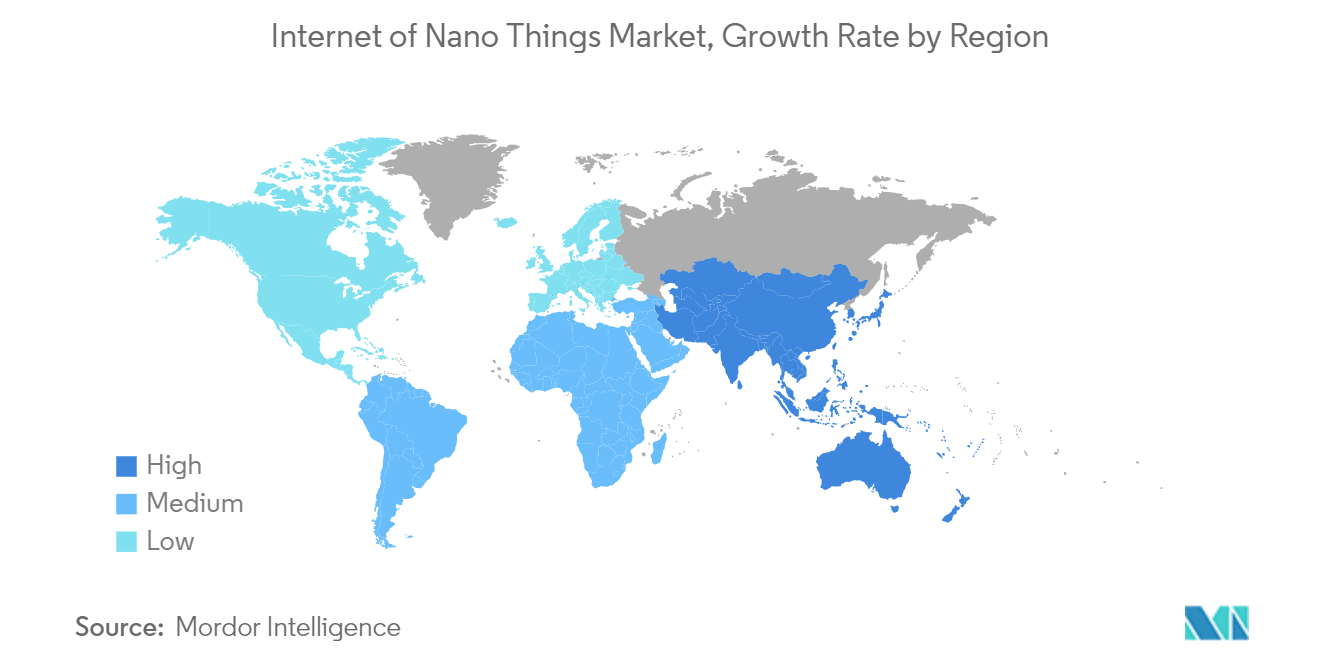
Internet Of Nano Things Industry Overview
The internet of nano things market is semi-competitive and consists of several key players like Schneider Electric, IBM, and Intel. However, the market remains consolidated, with many players trying to occupy the share. Their ability to continually innovate their products and services by investing significantly in research and development has allowed them to gain a competitive advantage over other players.
May 2024: CGI and Nokia unveiled plans to bolster their collaboration, focusing on merging 5G private wireless networking technology with CGI's suite of business services. This strategic alliance aims to streamline the deployment and management of digital solutions tailored for data-centric, real-time business operations. Leveraging their collective strengths, the partners successfully implemented a 5G and 4G private network in Northern Ireland's manufacturing and educational environments. This initiative granted access to network technologies and included support for the narrowband-internet of things (NB-IoT).
September 2023: Intel divested its 10% stake in the advanced chip tool sector to TSMC. IMS Nanofabrication, headquartered in Vienna, Austria, specializes in crafting multi-beam masking tools pivotal for producing cutting-edge chips, particularly those reliant on extreme ultraviolet lithography (EUV) technology. Intel remains the majority stakeholder of IMS, which will continue to operate as a standalone subsidiary under CEO Elmar Platzgummer.
Internet Of Nano Things Market Leaders
-
Schneider Electric SE
-
Siemens AG
-
IBM Corporation
-
Intel Corporation
-
Cisco Systems Inc.
*Disclaimer: Major Players sorted in no particular order
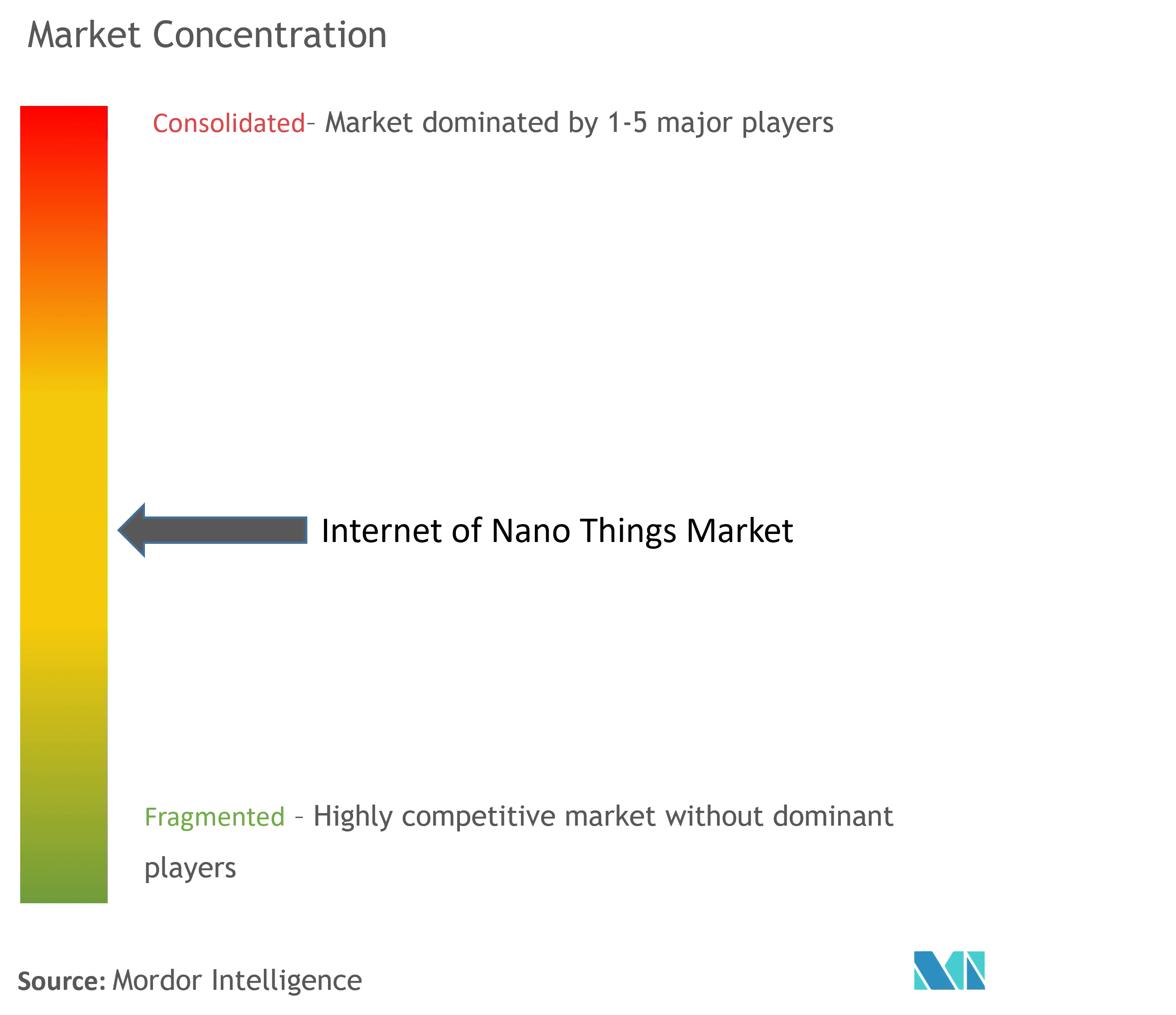
Internet Of Nano Things Market News
- July 2023: Comcast's MachineQ unveiled an expansion to its indoor asset-tracking IoT solution. This enhancement features a real-time location system (RTLS) and introduces a set of modernized asset tracking tags alongside a space utilization solution. The product suite includes the Nano RT, Nano LP, Dura ET, Dura PT, and Dura AC, catering to various needs. These tags vary in form factors, environmental ratings, and capabilities, ensuring they can track anything from small, hand-held assets to those in rugged environments.
- April 2023: Barcelona-based Sateliot announced the launch of a 5G IoT nanosatellite via SpaceX to democratize access to the internet of things. With the deployment of this technology, users can easily switch from a terrestrial to a non-terrestrial 5G network, with no requirement to purchase any extra hardware, such as antennas or modems. Additionally, they can use their existing SIM cards and mobile operators because of the standard roaming agreements carried out by Sateliot.
Internet of Nano Things Market Report - Table of Contents
1. INTRODUCTION
- 1.1 Study Assumption and Market Definition
- 1.2 Scope of the Study
2. RESEARCH METHODOLOGY
- 2.1 Research Framework
- 2.2 Secondary Research
- 2.3 Primary Research
- 2.4 Primary Research Approach and Key Respondents
- 2.5 Data Triangulation and Insight Generation
3. EXECUTIVE SUMMARY
4. MARKET INSIGHTS
- 4.1 Market Overview
-
4.2 Industry Attractiveness - Porter's Five Forces Analysis
- 4.2.1 Bargaining Power of Suppliers
- 4.2.2 Bargaining Power of Buyers
- 4.2.3 Threat of New Entrants
- 4.2.4 Threat of Substitutes
- 4.2.5 Intensity of Competitive Rivalry
- 4.3 Value Chain Analysis
- 4.4 Assessment of the Impact of COVID-19 on the Market
- 4.5 Technology Snapshot
5. MARKET DYNAMICS
-
5.1 Market Drivers
- 5.1.1 Wide Connectivity in Devices
- 5.1.2 Emergence of Nanotechnology
-
5.2 Market Challenges/Restraints
- 5.2.1 Security Concerns
- 5.2.2 High Costs of the Technology
6. MARKET SEGMENTATION
-
6.1 By Component
- 6.1.1 Hardware
- 6.1.2 Software
- 6.1.3 Connectivity/Services
-
6.2 By End User
- 6.2.1 Healthcare
- 6.2.2 Logistics
- 6.2.3 Defense and Aerospace
- 6.2.4 Manufacturing
- 6.2.5 Energy and Power
- 6.2.6 Retail
- 6.2.7 Other End Users
-
6.3 By Geography
- 6.3.1 North America
- 6.3.2 Europe
- 6.3.3 Asia
- 6.3.4 Australia and New Zealand
- 6.3.5 Latin America
- 6.3.6 Middle East and Africa
7. COMPETITIVE LANDSCAPE
-
7.1 Company Profiles
- 7.1.1 Schneider Electric SE
- 7.1.2 Siemens AG
- 7.1.3 IBM Corporation
- 7.1.4 Intel Corporation
- 7.1.5 Cisco Systems Inc.
- 7.1.6 SAP SE
- 7.1.7 Juniper Networks Inc.
- 7.1.8 Qualcomm Inc.
- 7.1.9 Nokia Corporation
- *List Not Exhaustive
8. INVESTMENT ANALYSIS
9. MARKET OPPORTUNITIES AND FUTURE TRENDS
** Subject To AvailablityInternet Of Nano Things Industry Segmentation
The scope of the IoNT market study is structured to track spending on hardware, software, and connectivity services across industries such as healthcare, logistics, aerospace, manufacturing, retail, and energy power, among other end-user industries. All data presented in the study is as per the most recent information, and all market projections are adjusted to reflect the impact of COVID-19 on the IoNT market.
The internet of nano things market is segmented by component (hardware, software, and connectivity/services), end-user (healthcare, logistics, defense and aerospace, manufacturing, energy and power, and retail), and geography (North America, Europe, Asia-Pacific, Latin America, and Middle East and Africa). The market sizes and forecasts are provided in terms of value (USD) for all the above segments.
| By Component | Hardware |
| Software | |
| Connectivity/Services | |
| By End User | Healthcare |
| Logistics | |
| Defense and Aerospace | |
| Manufacturing | |
| Energy and Power | |
| Retail | |
| Other End Users | |
| By Geography | North America |
| Europe | |
| Asia | |
| Australia and New Zealand | |
| Latin America | |
| Middle East and Africa |
Internet of Nano Things Market Research FAQs
How big is the Internet Of Nano Things Market?
The Internet Of Nano Things Market size is expected to reach USD 26.47 billion in 2024 and grow at a CAGR of 20.23% to reach USD 66.5 billion by 2029.
What is the current Internet Of Nano Things Market size?
In 2024, the Internet Of Nano Things Market size is expected to reach USD 26.47 billion.
Who are the key players in Internet Of Nano Things Market?
Schneider Electric SE, Siemens AG, IBM Corporation, Intel Corporation and Cisco Systems Inc. are the major companies operating in the Internet Of Nano Things Market.
Which is the fastest growing region in Internet Of Nano Things Market?
Asia Pacific is estimated to grow at the highest CAGR over the forecast period (2024-2029).
Which region has the biggest share in Internet Of Nano Things Market?
In 2024, the North America accounts for the largest market share in Internet Of Nano Things Market.
What years does this Internet Of Nano Things Market cover, and what was the market size in 2023?
In 2023, the Internet Of Nano Things Market size was estimated at USD 21.12 billion. The report covers the Internet Of Nano Things Market historical market size for years: 2019, 2020, 2021, 2022 and 2023. The report also forecasts the Internet Of Nano Things Market size for years: 2024, 2025, 2026, 2027, 2028 and 2029.
Internet of Nano Things Industry Report
Statistics for the 2024 Internet of Nano Things market share, size and revenue growth rate, created by Mordor Intelligence™ Industry Reports. Internet of Nano Things analysis includes a market forecast outlook to 2029 and historical overview. Get a sample of this industry analysis as a free report PDF download.



